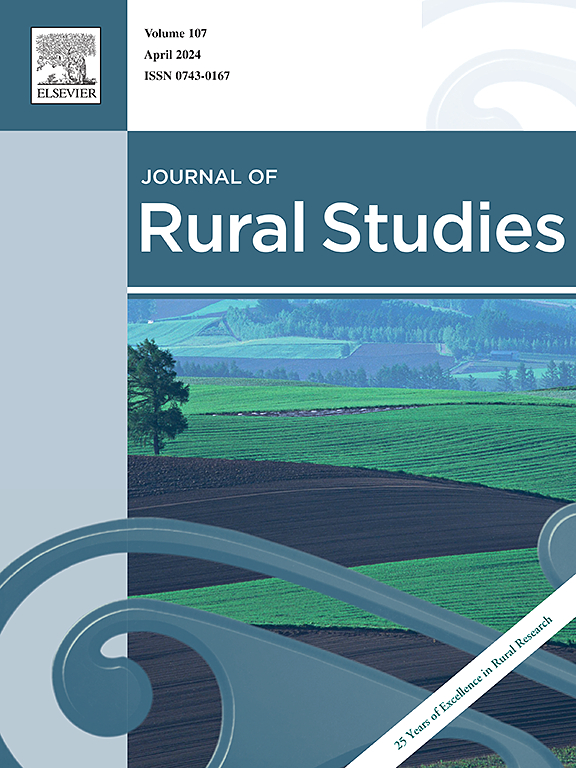Leveraging social ties to financial gains: Exploring the impact of social capital in rural development
IF 5.1
1区 社会学
Q1 GEOGRAPHY
引用次数: 0
Abstract
Social capital, defined as networks of individuals linked through bonding or bridging relationships, plays a crucial but poorly conceptualized role in place-based development. The word “capital” implies an underlying value of the social connections throughout a community, and this study explores how these social relationships are used to initiate, plan, access financial capital, and implement economic development projects in rural areas. We avoid county-level aggregation bias and use a divergent pathway case study of projects across eight communities to examine how social ties are used during rural development in places with both high and low financial capital. Both types of communities had active social networks and were successfully completing projects, but they were sometimes using their ties differently. We find that most projects initiate through bonding social capital. The availability of financial capital within a network significantly influences network ties and their utilization in later steps of rural development projects. Low prosperity communities with limited financial capital are more likely to use bridging ties to leverage new financial resources. High prosperity communities relied on both bonding and bridging ties but had more potential actors, financial resources, and business experience. We find social and financial capital are intertwined, suggesting future efforts to support rural development should consider both types of assets.
利用社会关系促进经济收益:探索社会资本对农村发展的影响
社会资本被定义为通过纽带或桥梁关系联系起来的个人网络,在基于地方的发展中起着至关重要的作用,但概念化程度很低。“资本”一词意味着整个社区的社会关系的潜在价值,本研究探讨了如何利用这些社会关系来发起、计划、获取金融资本和实施农村地区的经济发展项目。我们避免了县级的聚集偏差,并使用了一个跨越八个社区的项目的发散路径案例研究,来研究在金融资本高和低的地方,社会关系是如何在农村发展中被利用的。这两种类型的社区都有活跃的社交网络,并且都成功地完成了项目,但他们有时会以不同的方式使用他们的关系。我们发现大多数项目都是通过凝聚社会资本来启动的。网络内金融资本的可用性对网络关系及其在农村发展项目后期步骤中的利用有重大影响。金融资本有限的低繁荣社区更有可能利用桥梁关系撬动新的金融资源。高度繁荣的社区依赖于纽带和桥梁关系,但有更多的潜在参与者、金融资源和商业经验。我们发现社会资本和金融资本是相互交织的,这表明未来支持农村发展的努力应该考虑这两种类型的资产。
本文章由计算机程序翻译,如有差异,请以英文原文为准。
求助全文
约1分钟内获得全文
求助全文
来源期刊

Journal of Rural Studies
Multiple-
CiteScore
9.80
自引率
9.80%
发文量
286
期刊介绍:
The Journal of Rural Studies publishes research articles relating to such rural issues as society, demography, housing, employment, transport, services, land-use, recreation, agriculture and conservation. The focus is on those areas encompassing extensive land-use, with small-scale and diffuse settlement patterns and communities linked into the surrounding landscape and milieux. Particular emphasis will be given to aspects of planning policy and management. The journal is international and interdisciplinary in scope and content.
 求助内容:
求助内容: 应助结果提醒方式:
应助结果提醒方式:


